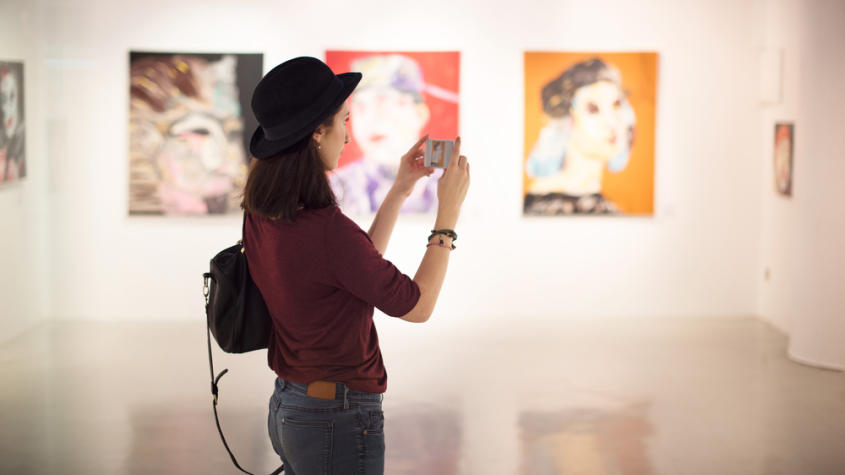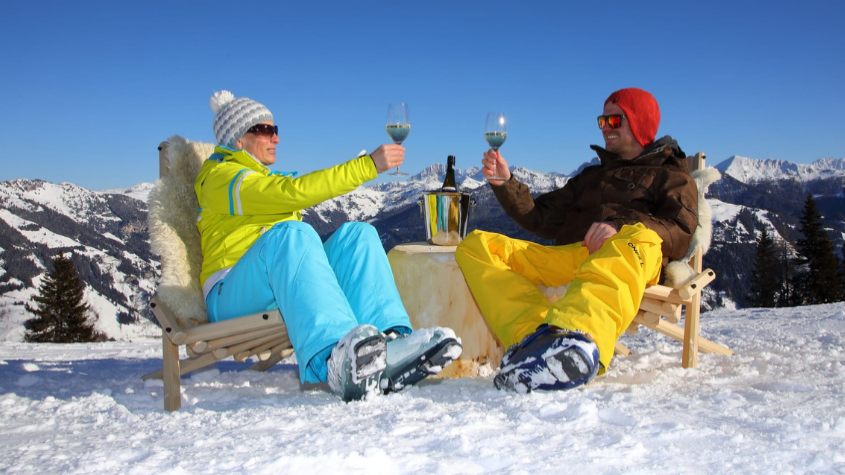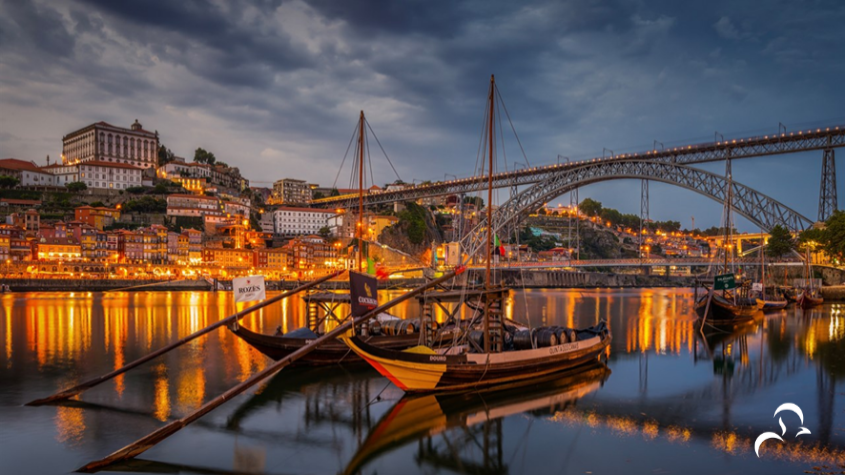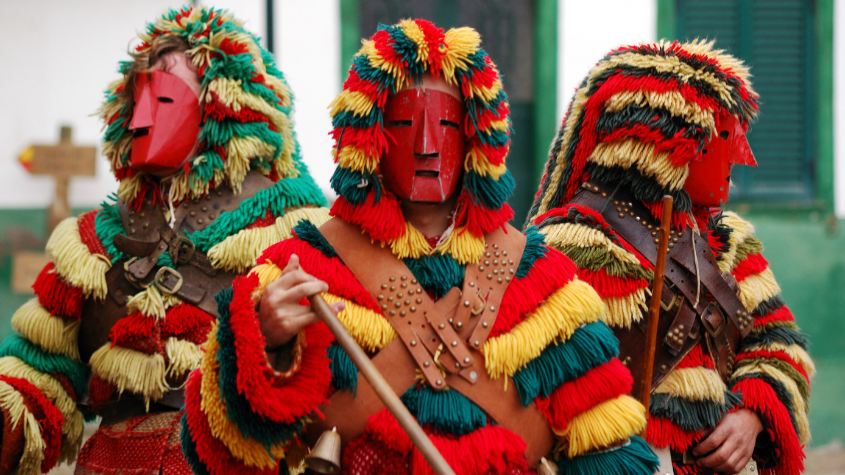
UNESCO Intangible Heritage in Portugal
The accelerated globalization of the world brought innovations and connections as wonderful as they were fantastic and unthinkable, decades ago. Information, transport, science, travel, cultural exchange and commercial intense, are just some of them. But it also brought new dangers and threats. What we consider to be local, artisanal, familiar, authentic. It is in this double context of movement, carried out at a dizzying speed, that we can understand why national and international associations and institutions, face the struggle for the preservation of cultural expressions of value, as a priority.
The Intangible Cultural Heritage (PCI) recognized by Unesco is an example of this struggle. It is about preserving, recovering, and projecting its sustainability in the future. Like? By identifying, recognizing, and supporting cultural expressions that are a source of knowledge, interpretation and experience with the territories and communities to which they belong. With relevance and value for those who produce them and for all those who can enjoy the enormous intangible or intangible wealth that exist. For that it is also necessary to disclose. And travel and tourism can and should be areas that participate in this valorization, in a balanced and sustained way.
The process of applying for Intangible Cultural Heritage of Humanity by Un and sco, from its planning, submission and appreciation to its approval and registration, is a long and demanding process. Of this whole process, it is worth mentioning the human factor as the most important criterion.
This article's main objectives are to make known, to value, and to disseminate all these “immaterial cultures” of Portugal.
Portugal have 9 expressions of culture, inscribed on the representative list of the of Humanity 's Intangible Cultural Heritage recognized by UNESCO:
1. Fado, urban popular song (2011)
2. Mediterranean Diet (2013)
3. Sing Alentejo (2014)
4. Handmade Production of Chimes (2015)
5. Falconry (2016)
6. Black Pottery Production of Bisalhães (2016)
7. Crafts Clay Figures of Estremoz (2017)
8. Carnival of Podence (2019)
9. Filigree from Gondomar (2023)
1. Fado

What is Fado?
Fado is a typical musical style from Portugal, born in the urban context of Lisbon, in XIX century. It is usually sung by one person, singer, acompanhad to by a classical guitar or viola and a Portuguese guitar. The word fado derives from the Latin, "fatum", and is understood in the Portuguese language as destiny, luck or chance, fortune. It is also a way of living, feeling, and expressing in the form of a popular song, the ups and downs of life. And the feeling of longing that the Portuguese consider so theirs.
Fado was born in the popular contexts of Lisbon from the sec. XIX. Fado was sung, often spontaneously, mainly in moments of conviviality and leisure or festive events, in social contexts and physical places associated with marginality and the lower classes of the population.
From the first decades of the s ec. XX the fado is spreading and beginning to be known in all the fringes of the society. Win one prospective commercial and becomes also national.
During sec. XX Fado is elevated to the category of national symbol or art, much for the political use that influenced it, and for the new technologies such as radio and television that have resized it. It is around this time that it also begins to be international.
With the April 1974 revolution, the democratic state was established, and fado suffered a lot in the transition years, due to its past as a symbol of the dictatorship, but it quickly reached the national consensus as Portuguese musical heritage. Outstanding figures in this new transformation of fado were Amália Rodrigues and Carlos do Carmo, especially in the 1980s.
From the 90s the consecrating would fado, definitely, in the circuits of music internationally with singers like, Camané, Mariza, Carminho, Misia, Cristina Branco, Cuca Roseta, Gisela João, Ana Moura . Just to give a few examples.
Fado Characteristics
As we have seen, fado is sung by one person, a fado singer, accompanied by a classical guitar or viola and a Portuguese guitar. However, there may be duets and other instruments in addition to guitars. The simplicity of the melodic structure of Fado values the interpretation of the voice. A voice that is usually strong and full of felt soul. It is therefore easy to identify between interpreter, musicians, and listener.
There are sadder and more melancholic fado songs and others that are happier. Among the most sung themes, we can hear lyrics about love, daily life, individual destiny, longing, party and pilgrimage, popular people in a city, revenge and misfortune, high feelings of belonging, existence in the highs and lows of our human condition.
There are also several types of fado. There are more than two dozen. The oldest fado is the "sailor fado”, from which all the others derive. Bohemian fado, castado fado, fado corrido, fado mouraria, fado vadio, are just a few examples of the different types of fado.
Inseparable from fado is the Portuguese guitar. This instrument aligns 6 pairs of strings, 12 in total. It has a high-pitched, high-pitched sound, but clear and sharp. It is still produced by hand or semi-handcrafted. Among some essential references of the Portuguese guitar we can highlight Armando Augusto Freire, Carlos Paredes and his father, Artur Paredes.
Where can you listen to fado in Portugal?
Spread throughout the country the tradition of fado is strongest in Lisbon, Coimbra , and to a lesser extent in Porto . We can hear fado in the streets, fado houses, concert halls, bars, restaurants, music festivals and in private houses or events. There are some differences between the fado sung in Lisbon and Coimbra. In Coimbra only men can sing, the tuning of the Portuguese guitar is done in a low tone, and the performance technique is different to project the sound of the instrument in the outdoor spaces.
In Lisbon you can find typical fado houses in the neighborhoods of Mouraria, Bairro Alto, Alfama.
Fado show in Porto with dinner
Fado show in Coimbra and night tour
Tip when watching a fado show: it is not advisable to clap between the songs. Only at the end of the show.
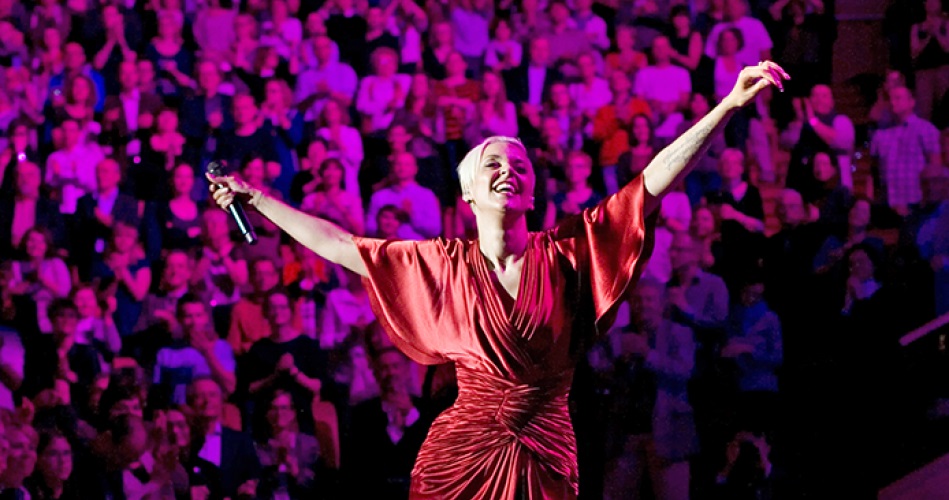
Fado is one of the cultural expressions, most appreciated and sought after, both by the Portuguese and by those who visit us. It is an expression of the authentic that exists in each human being. An encounter, if not with the Portuguese soul, at least with yours.
Year of registration: 2011
2. Mediterranean Diet
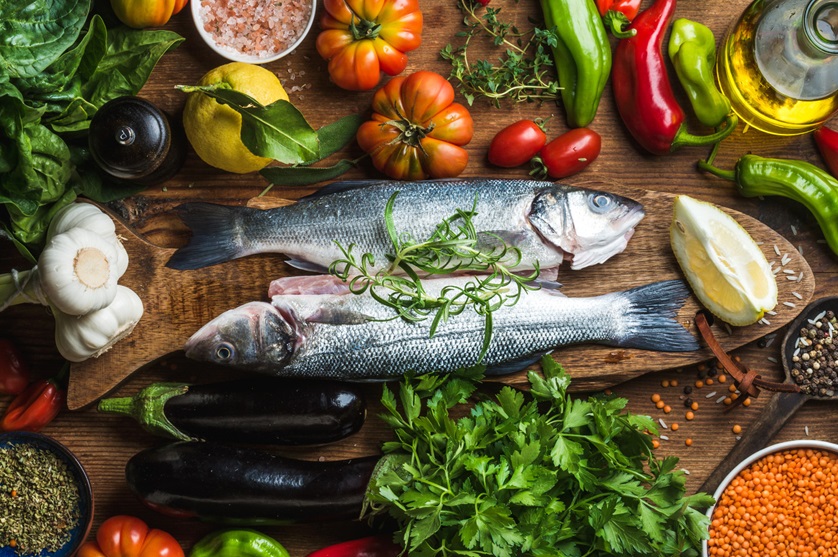
The value of the Mediterranean diet, and what it is, must be understood as a natural, social and cultural complex . It is in this triple dimension that it was inscribed as an Intangible Cultural Heritage of Humanity. Among the countries included are Portugal, Cyprus, Croatia, Spain, Greece, Italy and Morocco.
What is the Mediterranean Diet?
The Mediterranean diet is a way of life (and derives from the Greek word “day”). It therefore comprises history, culture, education, social and family context, and food or nutrition. It is vast to the point of considering, methods of production and collection, transformation, conservation and consumption of food; integrated with specific cultural practices, skills, knowledge, practices and traditions, which produce identity; integrated in their own social dynamics and fabrics , in the countries covered.
It was defined and disseminated in the 50s, 20th century, by the American physician Ancel Keys, who carried out several studies in the region. Since then, it has been promoted and popularized worldwide, for its proven benefits for physical and mental health.
Mediterranean diet foods and nutritional characteristics:
- High and varied consumption of foods of plant origin. Vegetables in general.
- Consumption of fresh, little processed and local products, respecting their seasonality.
- Moderate consumption of dairy products, milk, cheese, yogurt.
- Use of olive oil as the main fat for cooking or seasoning food; vegetable oils like canola and flaxseed oil.
- Dried fruits with high oil content, such as almonds, walnuts, cashews, peanuts, hazelnuts.
- Frequent consumption of fish and other seafood sea or river.
- Consumption in small proportions and infrequent red meat.
- Whole foods like rice, flour, oats, and wholegrain pasta, which are high in fiber.
- And aromatic herbs to season instead of salt.
- The water as the beverage base ingested daily in high amounts; natural juices; moderate consumption of wine, preferably ripe red.
Health benefits:
- Promotes longevity
- Stimulates more energy and sports
- Improves metabolism and promotes weight control.
- More and better nutrients than highly processed foods
- Improves cardiovascular health and prevents heart disease.
- Lower incidence of Parkinson's, Alzheimer's
- Redu tion of harmful cholesterol
- Helps prevent some types of cancer such as bowel and breast cancer.
- In general, it raises the quality of life and well-being. If practiced regularly.
Socio-cultural characteristics of the Mediterranean Diet:
Combined with food and nutritional value, the Mediterranean diet also includes the social, professional, cultural, and family context. Right from the knowledge, knowledge, techniques , and modus operandi , of the production or collection of food. Agriculture, fishing, and livestock are areas of excellence. Many times, carried by hand or semi-handmade, favor fresh and abundant food in the local ecosystem.
It privileges the purchase from local suppliers and respects the seasonality of the products. And of course, the way of cooking itself. Using simple culinary practices and with the ingredients in the right proportions. Making use of traditional recipes and secrets, often passed down from generation to generation orally, and refined by day-to-day experimentation. It also serves so the food and culinary education.
In Mediterranean cultures where the diet is common, meals are almost always done in groups. They can be groups of family members, friends, even customers. Or mixed. They also serve to build and strengthen relationships between those who sit at the same table. They also serve the practice of local customs and celebrations. They usually take place at fixed times, depending on the country or region. Characteristics that are not so pronounced in countries outside the Mediterranean sphere.
The women play a key role in both the transmission of practices and knowledge technical, of how to do, as well as the rituals, gestures, and sayings to know.
Be inspired by the Mediterranean Diet as I add to your well-being and knowledge. For your health, and that of others.
Year of registration: 2013
3. Cante Alentejano (Alentejo Song)
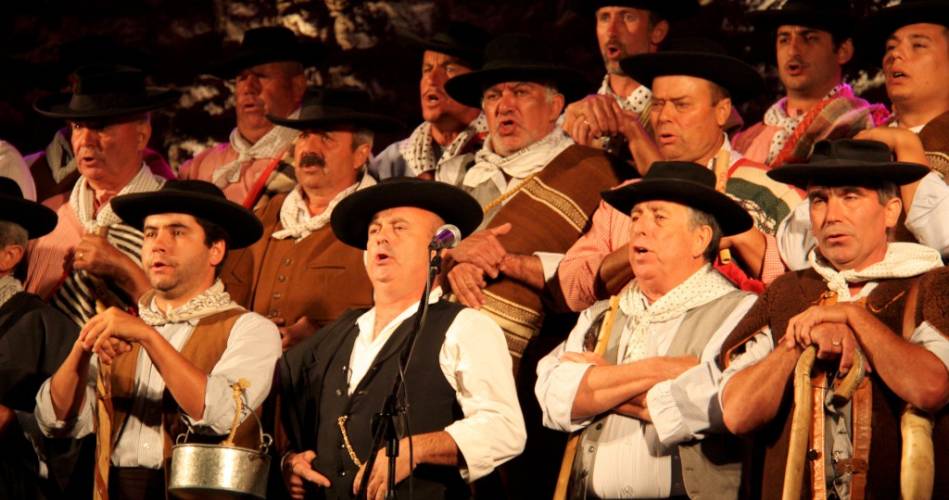
Cante Alentejano is a traditional musical genre in the region of Alentejo, in the south of Portugal. The Alentejo song is a choral song with two solo voices (high and high) that alternate with a choir, in which they also participate. It is often sung without any musical instrument, but more recently there has been a lot of accompaniment, complementing the voices, where its essence comes from. It is mainly associated to land the Alentejo, and rural classes whose work was largely in the sector agriculture and the mining extraction, during the late nineteenth and twentieth century.
The Alentejo song is distinguished from other polyphonic songs by performance, by the singing technique, and by the themes it addresses.
In performance it is usual to wear work clothes, to arrange the elements of the choir in ascending lines, the highlight or not of the soloists. The grabbing of arms between those who sing it. The use of a microphone is only used in professional shows or with a large audience. The groups that act are usually choral groups, some of them already centuries old. The contexts of the performance are traditionally informal, during work in the field, in taverns or in moments of celebration.
The singing technique, and its musicality, is based on a composition consisting of a dot (the first soloist), the alto (a second soloist that overlaps the dot), and finally the choir or the second voices . The rhythm is repetitive and slow with frequent, striking pauses, if there are no instruments to accompany.
This gives a rhythmic and monotonous musicality, in which the voices prolong the words. But powerful, out of the soul, reinforced by the choir, deep, guttural, even telluric.
The themes of the songs, sung by groups of men or women, reflect extremely hard the lives of people in Alentejo, with their dramas and real tragedies. The melancholy, the longing, the love, the will, and the memories are also recurring themes. That is why there is the idea that it is kind of a sad song. But in fact, there are also happy and festive songs and even more provocative ones, with ironic and humorous lyrics.
Although they are associated with groups of men, there are also female choral groups. It is a sharing of context and experiences that transcends gender.
Alentejo Singing does not leave anyone indifferent. It resonates from the depths of the body and the earth itself.
Year of registration: 2014
4. Chimes Manufacture
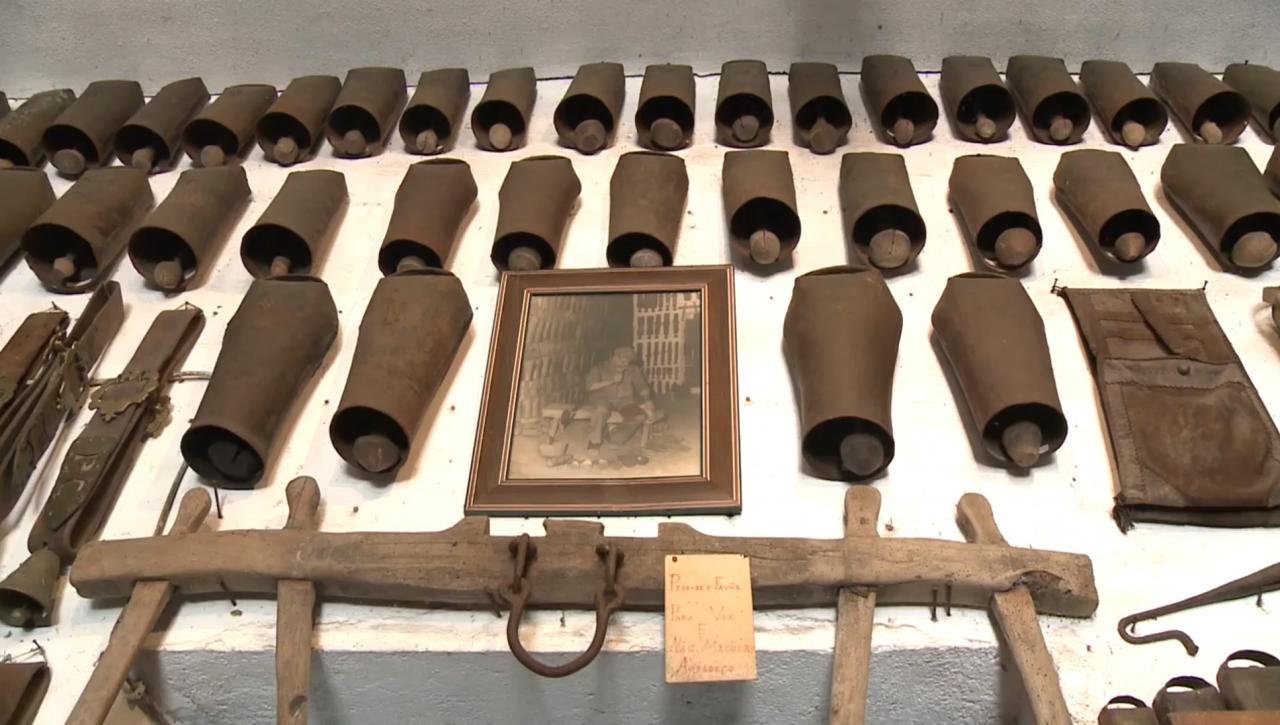
The Portuguese rattle is a percussion instrument made of iron and pieces of copper, with a unique internal clapper, similar to a small bell. It is done by a specialist, the rattle, or by a blacksmith who occasionally makes these objects. The complete rattle includes the clapper, the strap, and the buckle.
It is traditionally used by shepherds to locate and track their herds, that use the rattle around the necks of the animals creating a unique sound in rural areas. And differentiated, given that the sound of the rattles is different, allowing to distinguish the herds. It is also used in certain popular festivities.
Traces of rattles and their art of production were found in the Iberian Peninsula, dating back to the century I BC. An ancient art and practice used by the Celtiberians and Romans, in pastoralism and transhumance .
Artisanal production mode
The iron used in the production of the rattles is cold hammered and folded on the anvil until it is shaped like a bowl. Small pieces of copper or tin are placed around the iron. The ensemble is surrounded by a mixture of clay and straw. It is cooked and then dipped in ice water to solidify faster. After the burnt clay and straw are removed , the copper or tin that covers the iron is polished and the tone of the bell is tuned.
The size of the rattles is very variable, and the sounds can be very different as well.
The technical knowledge is transmitted within the family, from parents to children. It is therefore an activity that has evolved in a family context.
The Present and the Future
In Portugal, Alcáçovas is the reference place in the manufacture of rattles. This is where you can visit the Chocalho Museum, with a collection of more than 3,000 pieces collected over 60 years. It can also be found in Estremoz, Reguengos de Monsaraz and Viana do Alentejo.
Due to the changes in pastoralism that has become less usual, and to production with industrial means and techniques, the traditional production of the rattle has been decreasing drastically. For this reason, Unesco classified it as Intangible Heritage in need of “Urgent Safeguard”. In fact, there are only 11 workshops and 13 manufacturers of rattles, 9 of which are over 70 years old, according to the National Commission of UNESCO.
Even today, you can hear the distinctive sound of rattles and herds when visiting the more rural interior of Portugal. I dentistry of the fields and the Portuguese rural world, a key piece in the creation of the soundscape of these places.
Year of registration: 2015
5. Bisalhães Black Crockery making process
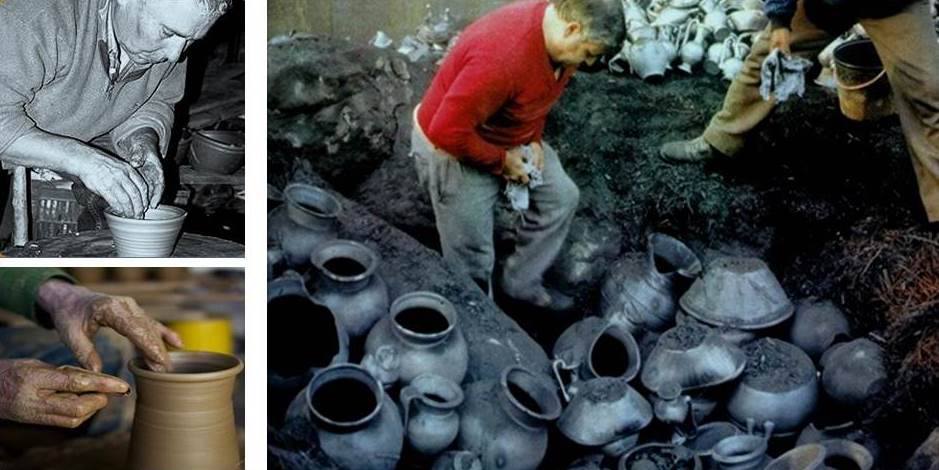
Bisalhães is a village located on the southern slope of the parish of Mondrões, municipality of Vila Real, in Portugal. Famous for its production of black pottery or black crockery.
There are two types of black crockery: “churra crockery” and “fine crockery”. The first is how the coarser pieces without major decorations are used, used in everyday life; the second is how the pieces with more artistic and worked details are used, mainly used for decoration.
The process of making Bisalhães pottery dates back at least to the 16th century. Its production was increased in the XVIII century, due to the large number of people to work on the terraces and vineyards of the Douro.
This centenary method, from the preparation of the clay crockery cooking, was the first cultural record production level, where the human labor input is central .
Cooking process and its Immaterial Value
The immaterial richness of the Bisalhães black crockery making process comes from the set of techniques and knowledge that it involves, from the treatment of the raw material to the cooking of the objects. It is a complex process that briefly involves: obtaining quality clay, and preparing it; giving shape, with the potter's art and various instruments, such as augueiro or fanadouro, and specific techniques; the smoothing or "headdress" of the pieces and subsequent decoration; and finally the cooking of the pieces.
The black color crockery is achieved by baking the pieces made by Potters in open furnaces the earth, where they are Burnt the s dry bushes, and then drowned out with soil that is mixed with smoke dark tone.
This knowledge is transmitted orally, from person to person, usually from father to son or grandfather to grandson, and even within the local community to close relatives or friends.
This black crockery, which is produced throughout the year, is a family activity with a marked sexual and age division of labor. The older man and older sons are responsible for the heaviest and riskiest tasks, of working on the wheel and hanging the dishes. The woman and minor children, to the work less heavy, as the preparation of the clay, the water supply and gorse for the baking of clay and decorate the dishes. Women were also in charge of sales. That is why it is a family economy process.
The importance that this activity has, was recognized by Unesco. For the local community, due to the historical and cultural impact of this material heritage, and the immaterial knowledge that it involves. It is also classified as an “urgent safeguard” to ensure and promote its continuity. There are less than 10 professional potters.
If you travel through the northern interior and center of Portugal, you will still find examples of black china in commercial and private houses.
Year of registration: 2016
6. Falconry
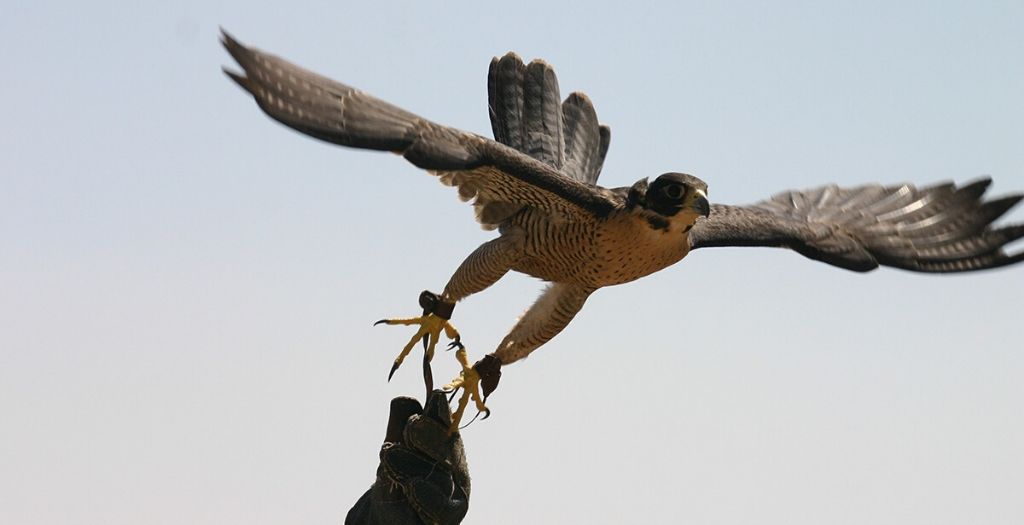
Falconry or cetraria is a type of hunting done by a human, the falconer (a), and a bird of prey, who work as a team, to hunt wild animals in their natural environment. In some visual representations it appears also associated to the practice warrior, but do not stop ça have played an important role in the recognition or military confrontation. Today, this practice is also linked to the cult of beauty, flight, and nature. The highest value of falconry is the beauty of the game and not the capture of prey, which is considered secondary or even irrelevant.
Falconry is practiced in several countries on several continents: Austria, France, Hungary, Mongolia, Morocco, Saudi Arabia, Spain, Portugal are just a few examples.
It has centuries of existence and the characteristic of its practice has been little changed over time. Techniques, nomenclature, and materials badges are used today as they were in the past.
The partnership between Falcoeiro and Bird of Prey
The falconer must know the birds of prey, their training, ensure their good treatment and health, and the species to be captured in their habitats. You must also have and know how to use specific equipment and equipment, as well as your own facilities.
Birds of Prey: eagles, goshawks, hawks, vultures, hawks, snails , owls. In cetreira language, these species are distinguished in "Nobles" as the falcons and "Ignóbeis" as the eagles. Within the "noble" birds, considered the authentic birds of literacy, there is also a distinction between the "high-flying" birds, that is, the Falcões, and the "low-flying" birds, such as the Hawks. These distinctions are given according to certain practical aspects such as the speed of flight, the way of attacking or the feeding.
In the practice of falconry there are 3 main types of bidding:
a) In Low Flight, the bid is direct, short, and dynamic. The bird of prey came out of the warden's fist (or from a tree), in direct pursuit of the prey, always flying close to the ground.
b) In High Flight the falconer locates the prey at a distance and removes the capara from the bird of prey that starts the chase over great distances and often at great height. It is considered one of the most spectacular and difficult bids.
c) In Towering, the falconer must keep the prey immobilized (being able to be helped by a horse or dog), to allow the bird of prey to gain altitude and to prepare for a fast and fulminating attack in descent. It is considered quite exciting and highlights the importance of teamwork.
Gradually, falconer and bird of prey, forge a unique partnership. In the natural environment of its prey, this partnership challenges the natural strategies of escape from the prey, to achieve their capture.
The practice of falconry is associated with values or ideas of ecology, respect for habitats and their creatures and their protection. It is the art of a partnership, which is developed between falconer and bird of prey whose best expression is the beauty of the game.
Currently, events promoted by falconry or at medieval fairs can be enjoyed all over the country.
Year of registration: 2016
7. Production of Clay Figurines from Estremoz
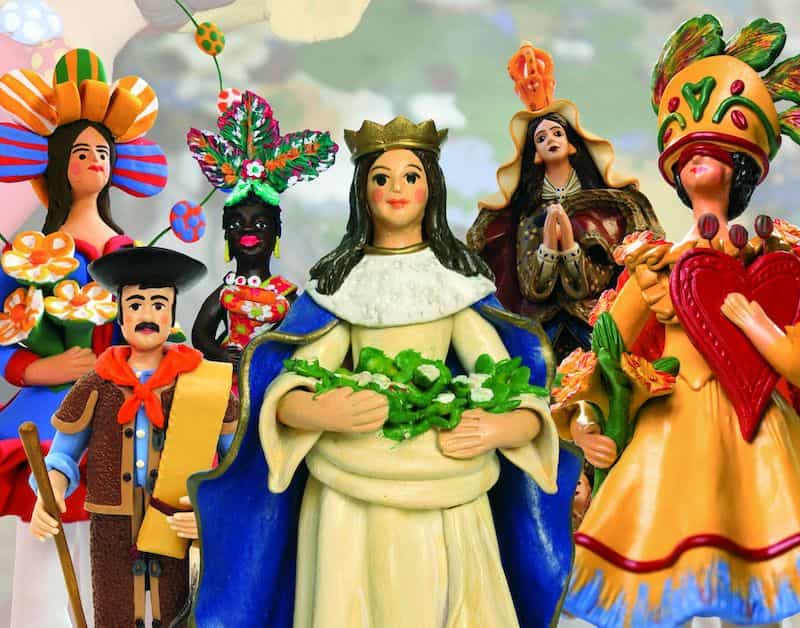
The Estremoz council in Alentejo is known for its production of clay figures, which has become an emblem and symbol of the region. It is the know-how of figured their specific modeling and aesthetic originality of art and the creative process, both national and international, which led to UNESCO for its recognition as Heritage Intangible Heritage of Humanity. For promotion and continuation of the tradition as well.
It was the first time that a figurative art was distinguished by UNESCO.
The historical collection since the century. XVII can be seen at the Municipal Museum of Estremoz.
Clay Figures and the Production Process
Figures or clay dolls Estremoz are easily identificáve is due to detail and the vivid colors that are present in all the figurations.
The colors used are of great variety, but the primary ones are highlighted, blue, green, and red, to which we can add yellow (secondary color).
Most of the shapes of the figures are quite realistic, but there are also dolls with unrealistic proportions, according to the intention of those who buy or order them, or even those who make them.
Humans and animals, such as the horse, the mule, sheep are the most common figures. They are usually represented with cheerful features or poses. Sometimes humans are represented with objects, or in composite sets such as philharmonic or nativity scenes.
The dolls' themes include activities, parties, religious or civil icons, with local and traditional clothing, or historical ones such as the “napoleons”, dolls depicting the uniforms of the military during the French invasions. They have in common that they are close to the Estremoz region.
The production process of clay figurines is traditionally done by women, the doll makers, although now there are male artisans. Each figure takes several days to be ready. First, the shapes of the figures are created and baked in ovens. After drying, they are painted with paints diluted in oil. And lastly, they are covered by a layer of varnish to highlight the colors and details, and to protect the figures.
Knowledge and skills are transmitted in family workshops and in professional contexts, where artisans teach the basics of their craft through non-formal training initiatives.
In addition to the visual recognizable and appealing, lively and beautiful , the clay figures , are also a great way to imagine the culture of the ancient times.
Year of registration: 2017
8. Podence Carnival
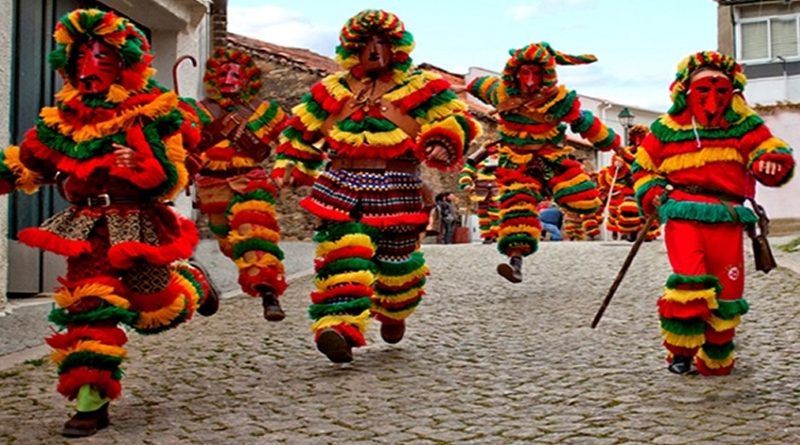
The Carnival Podence of or Carnival Chocalheiro is considered the Carnival most typical and genuine Portugal. It takes place in the village of Podence, in the municipality of Macedo de Cavaleiros, between February 3 and March 9, annually. It is one of the most cultural events important s northern Portugal, with a strong participation of the local community, which has kept this tradition alive until the present day.
It is very different from other carnivals with notorious influences from Brazil, such as that of Ovar.
It is a party that celebrates the end of winter and the beginning of spring. It is associated with fertility rites and invocations. It is also important for the construction of the social fabric and the local, rural, and post-rural economy. It results in a feeling of cultural and territorial belonging.
The most important moments of Podence Carnival are: Fat Sunday in which they announce weddings to pretend, between women and men singles of the village; the 3rd Carnival fair, in which the Caretos parade takes place; and the Queima do Entrudo ceremony, which announces the end of the party.
Along the three days of celebration, a program of parallel activities takes place, such as thematic exhibitions, fair of regional products and concerts of traditional music, among others, aimed both at the community, and for tourists and visitors.
Caretos de Podence
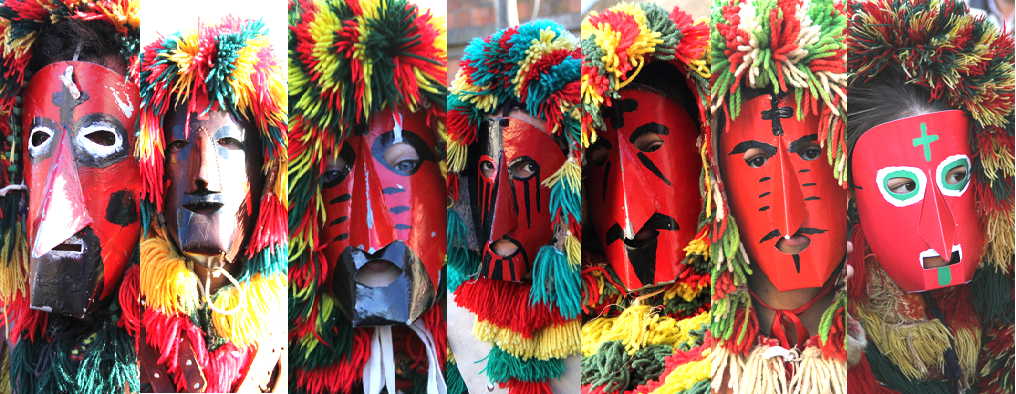
Characteristic and striking figures of this singular Carnival are the Caretos de Podence.
The Caretos de Podence represent diabolical and mysterious images, ambivalent in anthropological terms, which come to life at Carnival and then disappear throughout the year, until the next celebration. They wear thick woolen blankets with bright colors, mainly red, green, and yellow, with hanging rattles, which emit an announcing sound in the distance and ensursedor in the vicinity. Their figure is anthropomorphic, and they wear pointed-nose masks made of tin or leather.
Caretos parade through the streets with crazy and unpredictable movements, making the rattles chime vigorously. There is a permittivity accepted during the period of the festival, where freedom is granted to careto to do everything, or almost everything. So, your attitude can seem intimidating, crazy, scary, and even erotic. In the dance they do, the rattles they carry hit the women in a rudely seductive way. Let us not forget the analogy with the renewed fertility of the land.
They also inspire stray joy, humor, saloia comedy, which touches the audience that flirts with the parade. They can enter the houses or throw certain agricultural products at them. Always with mischief, such as the occasional theft of a smokehouse, or throwing ashes at people.
The caretos are mostly single men, although younger boys are also seen, the "facanitos" , who imitate the older caretos . To arrest and ensure the continuity of the tradition, it is important.
If you visit Podence outside Carnival, you can always discover “Casa do Careto”, a museum space in the village.
The Podence Carnival is a fun party for everyone, with good atmosphere, and key to keep the old traditions and d the social relations of the inhabitants of the region.
Year of registration: 2019
9. Filigree from Gondomar

Filigree from Gondomar is an ancient jewellery technique that originated in the municipality of Gondomar. It consists of twisting two very thin metal wires, made of gold, silver, and more rarely copper or brass, which are then flattened into a sheet metal cylinder. This centuries-old art is practised in small-scale, family-run workshops, using techniques passed down from one generation to the next.
Gondomar filigree is characterised by its precision and detail. The goldsmiths form complex designs, often inspired by nature, such as flowers, leaves and geometric shapes. The resulting pieces are often used to create jewellery, such as rings, earrings, necklaces and bracelets.
This heritage continues to run strong in the municipality, for example, in the ranking of the eight largest Portuguese jewellery and goldsmithing companies, five are from Gondomar. Jewellery in Gondomar accounts for around 60% of national production.
The importance of Gondomar filigree as Intangible Cultural Heritage of Portugal lies not only in its aesthetic beauty, but also in the preservation of traditional craft techniques and the cultural role it plays in the identity of the region and the country. Its inclusion in this heritage aims to safeguard and promote the continuity of this unique art, valuing it as an integral part of Portugal's cultural heritage.
Initiatives to preserve, promote and pass on knowledge of filigree have been developed, including training programmes, cultural events and museums dedicated to this art, contributing to its perpetuation and recognition as one of Portugal's cultural treasures.
Registration year: 2023
We hope that after learning more about Portuguese immaterial culture, you will fall in love with its varied expressions, just like us. And it is only the beginning, because there are more, many more.
Discover these and other riches of Portugal's intangible art and culture with Living Tours.
Did you like it?
Average votes: 4.63 of 5
Go Back to the Blog








